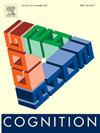Common and distinct neural substrates of rule- and similarity-based category learning
IF 2.8
1区 心理学
Q1 PSYCHOLOGY, EXPERIMENTAL
引用次数: 0
Abstract
Categorization is a fundamental ability in human cognition that enables generalization and promotes decision-making. A categorization problem can be solved by employing a rule-based or a similarity-based strategy. The current study aims to elucidate the brain mechanism for category learning by investigating whether the use of the two strategies is supported by common or distinct neural substrates. We conducted three experiments using stimuli with a rule-plus-similarity category structure and applying an EEG-fNIRS fusion methodology. In Experiment 1, participants were explicitly instructed to use either a rule-based (single feature) or a similarity-based strategy, while in Experiment 3, they were instructed to use a rule-based (multi-feature) or a similarity-based strategy. In contrast, in Experiment 2, participants were required to self-discover categorization strategies. After learning, categorization was tested. The results of the three experiments were largely consistent, revealing distinct decision-making processes associated with each strategy. The results revealed that hypothesis testing and semantic processing, as reflected by the larger P300 and N400 components and increased activation in Wernicke's area, were critical for rule-based category learning, suggesting the role of an explicit system. In contrast, complex visual processing and the integration of multiple features, as indicated by a larger P1 component and the heightened activation in the frontopolar cortex, were critical for similarity-based category learning, suggesting the role of an implicit system. These distinct cognitive processes challenge single-system accounts suggesting a unified neural mechanism for both forms of category learning. Instead, our findings are consistent with the COVIS theory, which implies an explicit system for rule-based category learning and an implicit system for similarity-based category learning.
基于规则和相似性的类别学习的共同和不同神经基质
分类是人类认知的一项基本能力,它可以实现概括和促进决策。分类问题可以通过采用基于规则或基于相似性的策略来解决。本研究旨在通过研究这两种策略的使用是否受到共同或不同的神经基质的支持,来阐明类别学习的大脑机制。我们进行了三个实验,使用具有规则加相似性类别结构的刺激,并应用脑电图-近红外光谱融合方法。在实验1中,参与者被明确指示使用基于规则的(单一特征)或基于相似性的策略,而在实验3中,他们被指示使用基于规则的(多特征)或基于相似性的策略。实验2要求被试自我发现分类策略。学习后进行分类测试。这三个实验的结果在很大程度上是一致的,揭示了与每种策略相关的不同决策过程。结果显示,假设检验和语义处理(反映在P300和N400成分的增加以及Wernicke区域的激活)对基于规则的类别学习至关重要,这表明显性系统的作用。相比之下,复杂的视觉处理和多种特征的整合,如更大的P1分量和额极皮层激活的增强,对于基于相似性的类别学习至关重要,这表明内隐系统的作用。这些不同的认知过程挑战了单一系统的说法,表明这两种形式的类别学习有统一的神经机制。相反,我们的发现与COVIS理论一致,该理论暗示了基于规则的类别学习的显式系统和基于相似性的类别学习的隐式系统。
本文章由计算机程序翻译,如有差异,请以英文原文为准。
求助全文
约1分钟内获得全文
求助全文
来源期刊

Cognition
PSYCHOLOGY, EXPERIMENTAL-
CiteScore
6.40
自引率
5.90%
发文量
283
期刊介绍:
Cognition is an international journal that publishes theoretical and experimental papers on the study of the mind. It covers a wide variety of subjects concerning all the different aspects of cognition, ranging from biological and experimental studies to formal analysis. Contributions from the fields of psychology, neuroscience, linguistics, computer science, mathematics, ethology and philosophy are welcome in this journal provided that they have some bearing on the functioning of the mind. In addition, the journal serves as a forum for discussion of social and political aspects of cognitive science.
 求助内容:
求助内容: 应助结果提醒方式:
应助结果提醒方式:


